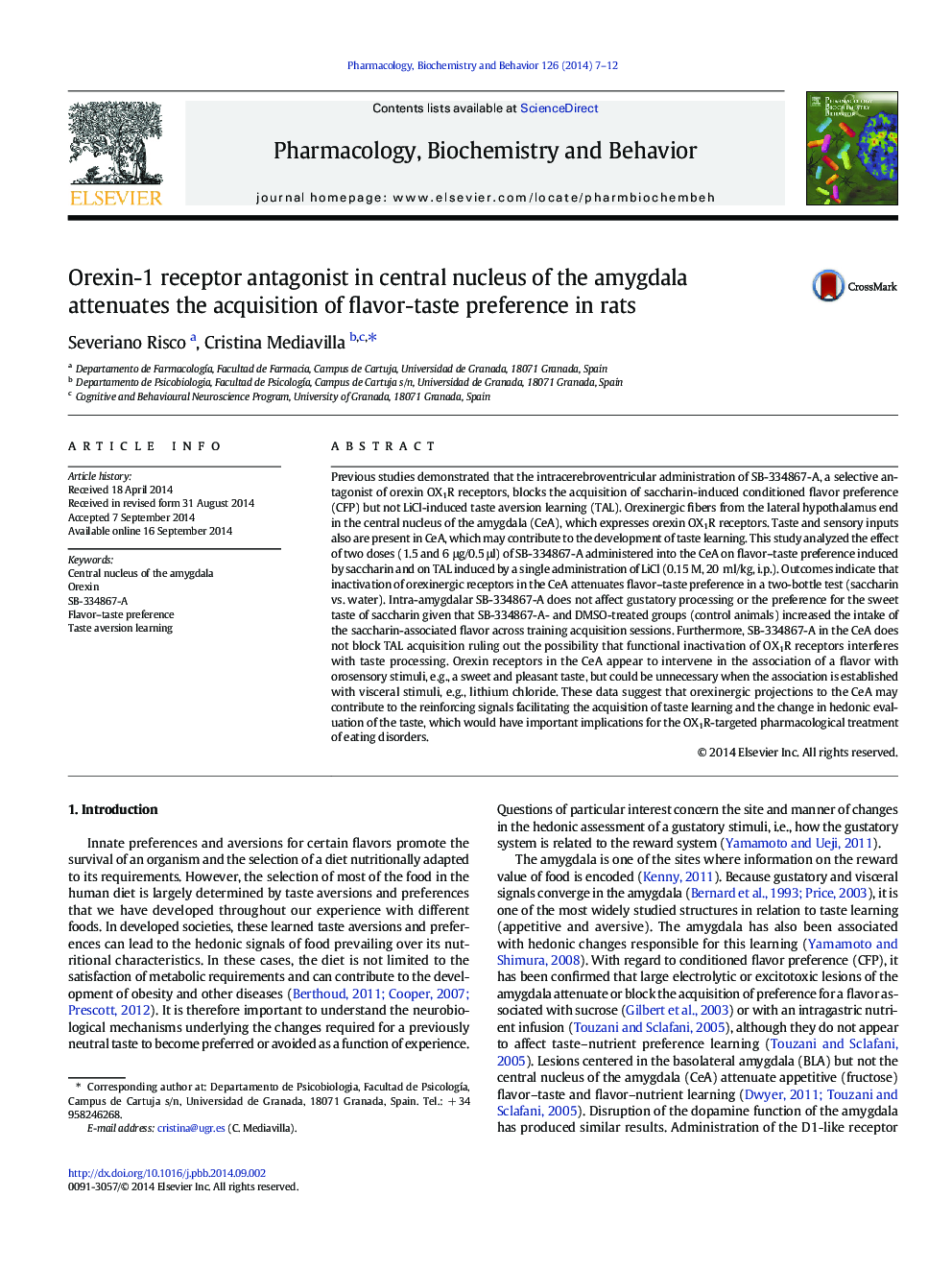| کد مقاله | کد نشریه | سال انتشار | مقاله انگلیسی | نسخه تمام متن |
|---|---|---|---|---|
| 2012904 | 1541858 | 2014 | 6 صفحه PDF | دانلود رایگان |
• SB-334867-A in the CeA attenuates flavor–taste preference learning induced by saccharin.
• Blockade of OX1R receptors in the CeA does not interrupt innate preference for sweetness.
• SB-334867-A does not block TAL induced by a sucrose–LiCl pairing.
• Orexin in the CeA may facilitate the association between a flavor and a sweet taste.
Previous studies demonstrated that the intracerebroventricular administration of SB-334867-A, a selective antagonist of orexin OX1R receptors, blocks the acquisition of saccharin-induced conditioned flavor preference (CFP) but not LiCl-induced taste aversion learning (TAL). Orexinergic fibers from the lateral hypothalamus end in the central nucleus of the amygdala (CeA), which expresses orexin OX1R receptors. Taste and sensory inputs also are present in CeA, which may contribute to the development of taste learning. This study analyzed the effect of two doses (1.5 and 6 μg/0.5 μl) of SB-334867-A administered into the CeA on flavor–taste preference induced by saccharin and on TAL induced by a single administration of LiCl (0.15 M, 20 ml/kg, i.p.). Outcomes indicate that inactivation of orexinergic receptors in the CeA attenuates flavor–taste preference in a two-bottle test (saccharin vs. water). Intra-amygdalar SB-334867-A does not affect gustatory processing or the preference for the sweet taste of saccharin given that SB-334867-A- and DMSO-treated groups (control animals) increased the intake of the saccharin-associated flavor across training acquisition sessions. Furthermore, SB-334867-A in the CeA does not block TAL acquisition ruling out the possibility that functional inactivation of OX1R receptors interferes with taste processing. Orexin receptors in the CeA appear to intervene in the association of a flavor with orosensory stimuli, e.g., a sweet and pleasant taste, but could be unnecessary when the association is established with visceral stimuli, e.g., lithium chloride. These data suggest that orexinergic projections to the CeA may contribute to the reinforcing signals facilitating the acquisition of taste learning and the change in hedonic evaluation of the taste, which would have important implications for the OX1R-targeted pharmacological treatment of eating disorders.
Journal: Pharmacology Biochemistry and Behavior - Volume 126, November 2014, Pages 7–12
